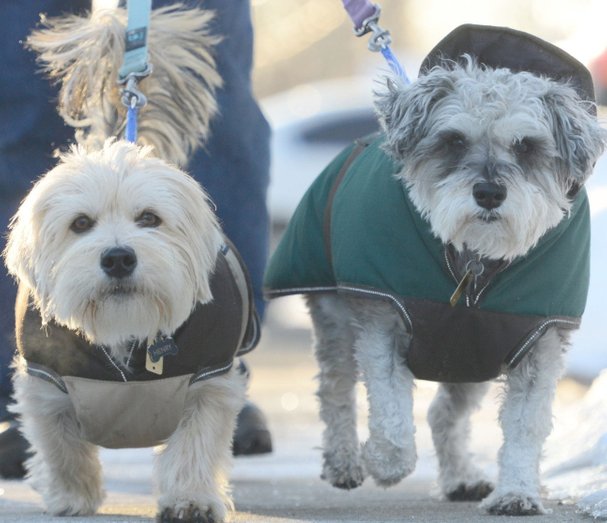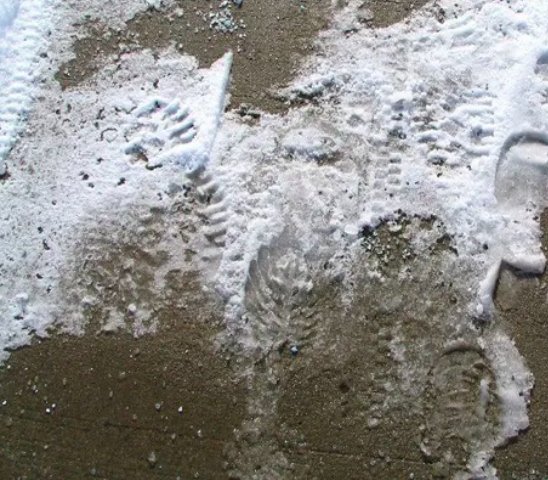Stormwater In Winter
Winter brings unique challenges for managing stormwater, as rain, snow, and ice can lead to flooding, pollution, and hazardous conditions. This webpage is designed to provide you with the tools and resources needed to address stormwater issues during the colder months and to understand the critical role winter stormwater management plays in protecting our environment and communities. From preventing icy runoff from carrying pollutants into waterways to tips for reducing localized flooding to special considerations for the family pet, you’ll find practical solutions and essential information to help safeguard your home, your neighborhood, and our shared water resources this winter.
Snow, Ice, and Stormwater For Residents & Homeowners
Keeping Your Winter Green: Environmentally Friendly Ice Melt Methods
Winter can bring snow, ice, and slippery sidewalks, but keeping our paths safe doesn’t have to come at the expense of the environment. Many traditional ice melt products contain harsh chemicals that can harm plants, pets, waterways, and infrastructure. Fortunately, there are eco-friendly alternatives and best practices that can help you manage ice without compromising the health of your surroundings.
Why It Matters
Traditional ice melt products often contain salts like sodium chloride or calcium chloride. While effective, these salts can:
Damage soil and vegetation.
Corrode concrete, metal, and vehicles.
Pollute waterways, harming aquatic life.
By choosing environmentally friendly options, you can protect your local ecosystem while ensuring safety during the winter months.
Eco-Friendly Ice Melt Options
Sand or Grit
Provides traction without chemical runoff.
Best for low-temperature environments where traditional salt might not be effective.
Calcium Magnesium Acetate (CMA)
Derived from limestone and acetic acid, CMA is less corrosive and safer for vegetation and waterways.
Kitty Litter or Wood Ash
Non-toxic materials that provide grip on icy surfaces.
Best Practices for Ice Management
Shovel Early and Often: Removing snow promptly reduces the need for deicers.
Use Sparingly: Apply ice melt only in necessary areas and at recommended rates. Overapplication doesn’t improve effectiveness and can cause harm.
Sweep Excess: Sweep up leftover ice melt to prevent it from washing into storm drains.
Combine Methods: Pair eco-friendly deicers with physical tools like snow shovels or plows for optimal results.
Protecting Our Waterways
Remember: everything we use on our driveways and sidewalks eventually flows downstream. By adopting environmentally friendly ice melt methods, we can reduce pollution in local rivers, streams, and lakes, ensuring they remain healthy for generations to come.
Switching to eco-friendly ice melt practices doesn’t just protect the environment—it also contributes to healthier neighborhoods and a stronger community.
Article-Keep Your Rain Gutters Ice Free- SLCo Stormwater Coalition
Article: How to De-Ice Your Driveway Quickly-(article + 2 infographics (Do’s & Don’ts) from Discount Dumpster
Article: Eco-Friendly Ways to De-ice Your Sidewalk- from Earth911
Article: Melting Snow: It’s Stormwater Too! from Penn State Extension
Article: Stormwater Tip: Keep Ice at Bay with Environmentally Friendly Methods- from PAH20
Article: Avoiding Stormwater Pollution Due to Ice and Snow- from EHS Daily Advisor
Snow, Ice and Pets
The American Red Cross provides the following 10 tips for keeping pets safe in winter:
Winter weather can be rough on our furry friends. Follow these steps from the American Red Cross to help ensure your pet’s safety when chilly weather hits their area.
Bring your pets inside during cold weather
Protect their paws. Salt and other chemicals used to melt snow and ice can irritate a pet’s paws
Take care of their coat and skin. To avoid itchy, flaking skin, the ASPCA recommends keeping your home humidified and towel dry your pet as soon as he or she comes inside.
Antifreeze is a deadly poison. Wipe up spills and store antifreeze out of reach.
Know your pet’s limits outdoors. Be aware of how your pet tolerates cold weather and adjust as needed. Consult your veterinarian if you need advice.
Check your engine. A warm vehicle engine can be an appealing heat source for outdoor and feral cats, but it's deadly. Check underneath your car, bang on the hood, and honk the horn before starting the engine.
Use space heaters with caution. The heater can burn your pet or be knocked over, possibly starting a home fire.
Watch for hypothermia. If your pet is whining, shivering, anxious, slower than usual or stops moving, seems weak or starts looking for warm places to burrow, get them back inside quickly because they are showing signs of hypothermia.
Keep an emergency kit for your pets in your emergency/evacuation supplies
Avoid walking on frozen water
Download the Red Cross Pet First Aid app to put veterinary advice for everyday pet emergencies in the palm of your hand. With videos, interactive quizzes and simple step-by-step advice it’s never been easier to know Pet First Aid.
Article: Keeping Pets Safe during Winter: The Dangers of Ice Melts- ASPCA
For Municipalities & Commercial Operations:
Guidance Booklet: Municipal Winter Stormwater Management Guide (Penn)
Brochure: De-Icing Material Application & Storage- from EPA




